Solana Blockchain - Crypto Academy / S4W4 - Homework post for [pelon53].
Good to learn about new things in cryptoacademy. Today i am writing homework task for professor @pelon53 which is about solana blockchain.
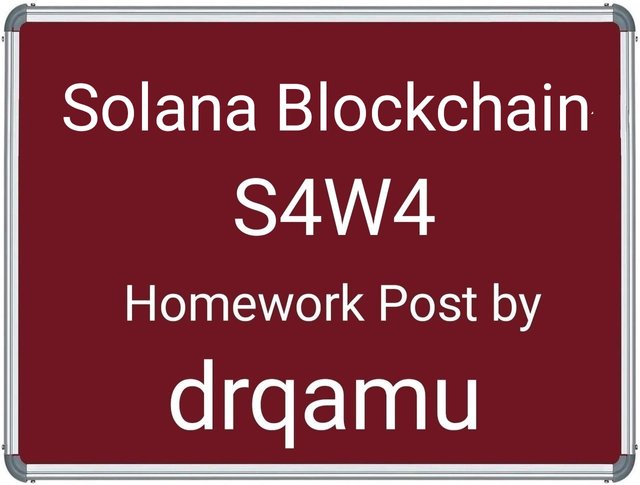

Explain in detail the PoH of Solana.

.jpg)
source
Solana is a decentralized, open source and public blockchain developed by solana labs and run by solana foundation. Solana is aimed at serving as a comprehensive support for decentralized applications (Dapps). In this context, it is as good as Etherium and cardno blockchain. However, in certain parameters like transaction speed (50k TPS) and fee, it has evolved as a better alternative to some of the poineer counterparts like BTC and ETH blockchains without compromising security and decentralized nature. Being a programmable blockchain, solana is a tough competitor of Etherium blockchain as it is equally efficient in operating smart contracts.
Solana is a proof of stake (PoS) and proof of history (PoH) blockchain that offers some advantages over PoW blockchain. On the basis of PoS algorithm, validator nodes are selected and given mining rights proportionate to the percentage of native tokens staked (SOL) . Once validator nodes are selected, rest of the operation is carried out by PoH algorithm.
We know that , in a decentralised environment consensus of time is a huge problem to tackle. Decentralized networks have solved this problem by incorporating centralized time system but blockchain does not trust timestamp from any external source. So it is not feasible for blockchain to incorporate centralized time system as it is external for blockchain. To arrange the data as per the time of occurrence, PoH nodes have installed internal clock for each node. The message reaching the nodes is arranged in the correct order of the time sequence as per the internal clock of the each node. So in proof of history algorithm, nodes do not need to interact with each other for developing consensus over sequence of the event and thus saves time and hence better scalability.
In conclusion, we can say that Solana has solved the trilemma of blockchain. As per trilemma of blockchain belief, it is said that a decentralized networks can only provide two of three benefits at any given time with respect to decentralization, security, and scalability. But Solana has bren able to provide all the three features and thus solved trilemma.

Explain at least 2 cases of use of Solana.

Solana blockchain is a programmable and open source blockchain that claims over 400 projects are currently running over it catering to diverse domains like DeFi, NFT, Dapps etc. FTX has launched scores of solana projects. For this task, I'll ne discussing Degenerate Ape and Raydium.
Degenerate Ape
NFTs are gaining a lot of traction these days and so is blockchain that used to sponsor them. For long time now, NFTs have been linked to Enterium blockchain as if it has patent over NFTs. Taking undue advantage, Etherium is charging heavy transaction charges from primary and secondary sales of NFTs. Solana has broken this monopoly and launched a NFT project as Degenerate Ape.
On degenerate Ape one has to mint Apes. Apes are not all alike but are categorised into different classes as Common, Uncommon, Rare, Super Rare, and Mythic. As we ascend this hierarchy, rarity of characters increase and so does the price.
For minting an Ape, user must have access to Phantom , Sollet or Solflare wallet . The current minting price of degenerate ape is 14.4 SOL on solanart. It has went up from 6 SOL at the launch. Solana is gaining popularity as it involves public figures like eve Harvey . He changed his Twitter profile photo to a Solana.
Following Solana’s sponsorship of Lollapalooza in july 2021, degenerate is further strengthened and so is "solana summer".
Raydium
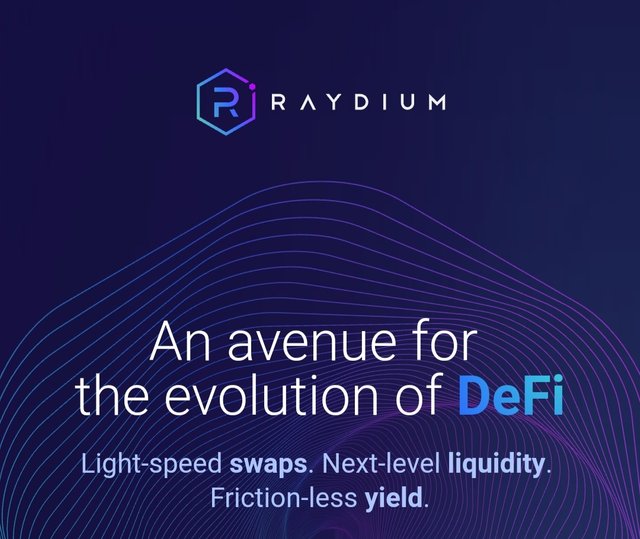
[Sou4ce](https://raydium.io/#/}
Raydium is a solana blockchain based automated market maker (AMM) that provides on chain liquidity. It is built for serum DEX. Native token of Raydium is RAY. Just like network token of all other platforms, RAY token confers voting rights on part of the token holders in vital decisions of the Raydium. Not only this, RAY can also be staked to earn IOD allocations and to pay for protocol fee.
I am skeptic about the names of founders. To begin with, Alpharay started early work for the protocol and was soon backed by XRay and GammaRay. All these are experts in the various protocol related parameters.
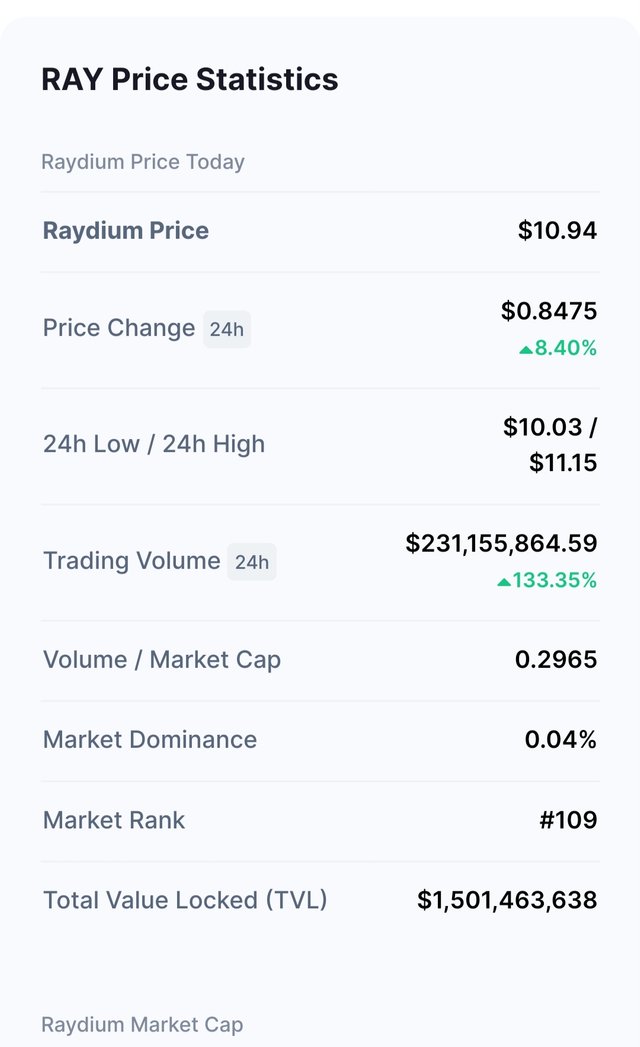

Detail and explain the SOLA token.

SOLA token is a native token of solana blockchain. It is used for paying transaction fee on solana blockchain. The live price of SOL is $156.73 and ranking as per market cap is 7. Since mid 2021 Sol has shown more than 100% inceease in price. In sep 2021 , SOL reached its all time high of $216.
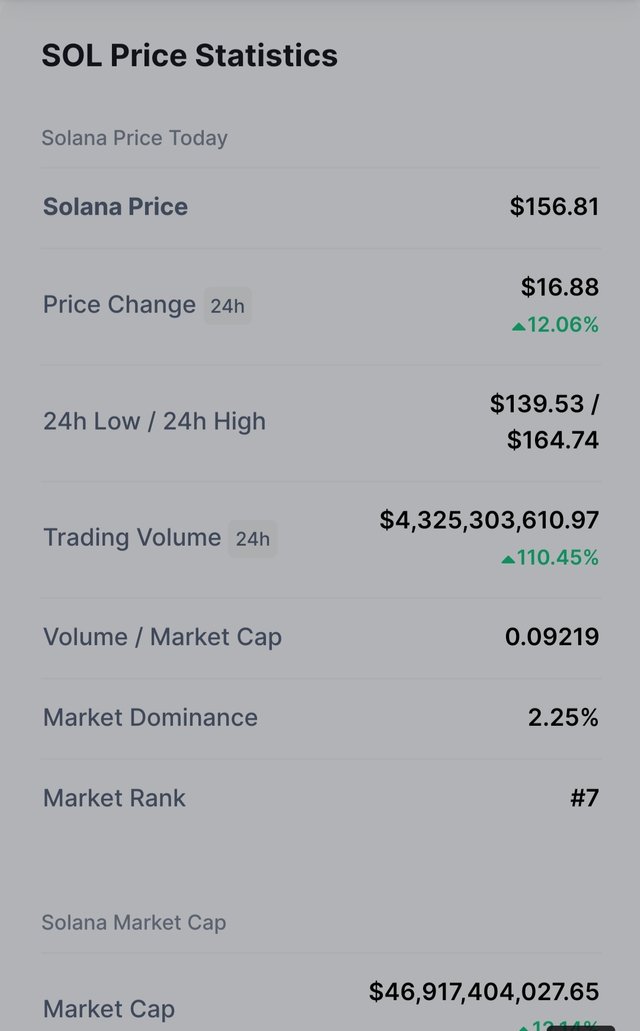
Soutce
Solana has been able to maintain its position and price without too many jerks because of its rock solid backing. Solana is backed by FTX and we know that FTX is one of the leading digital exchamge in the world and has launched various solana projects. Solana is also backed by some of the great names of cryptosphere and worth mentioning are lameda Research, Andreessen Horowitz and Polychain.
Crypto world is very much much optimistic about the growth of SOL and some investors believe solana to reach ETH in terms of price and market cap.

When did Solana Blockchain see its operations interrupted? Why? Explain.

Solana operations were interrupted for 17 hours on 14 sep 2021 but were resumed on 15 sep. It is believed to have occurred because of surge of transactions that caused the network to fork. Solana has later on stemmed the denial of services to resource exhaustion. Along with transaction upsirge, incontrollable flooding of the forwarder queue was also proposed by solana. Here is what they said:
The combination of the unbounded growth of the forwarder queues and resource-heavy blocks caused block producers to automatically propose several forks. The validator processes started to run out of memory and crash, and upon restart, the validators were unable to process all the proposed forks in time to catch back up with the rest of the network,” Solana elaborated
Solana’s official statement, “the cause of the network stall was a denial of service attack. At 12:00 UTC, Grape Protocol launched their IDO on Raydium, and bots generated transactions that flooded the network. These transactions created a memory overflow, which caused many validators to crash forcing the network to slow down and eventually stall. The network went offline when the validator network could not agree on the current state of the blockchain, which prevented the network from confirming new blocks".

Check the last block generated in Solana and make an approximate calculation of How many blocks per second have been generated in Solana, taking into account from the initial block to the current one? Justify your answer and show screenshots.

I'll be exploring solscan official website for these details. On main page of the website, we can see that the last block at the time of exploring was #99367454
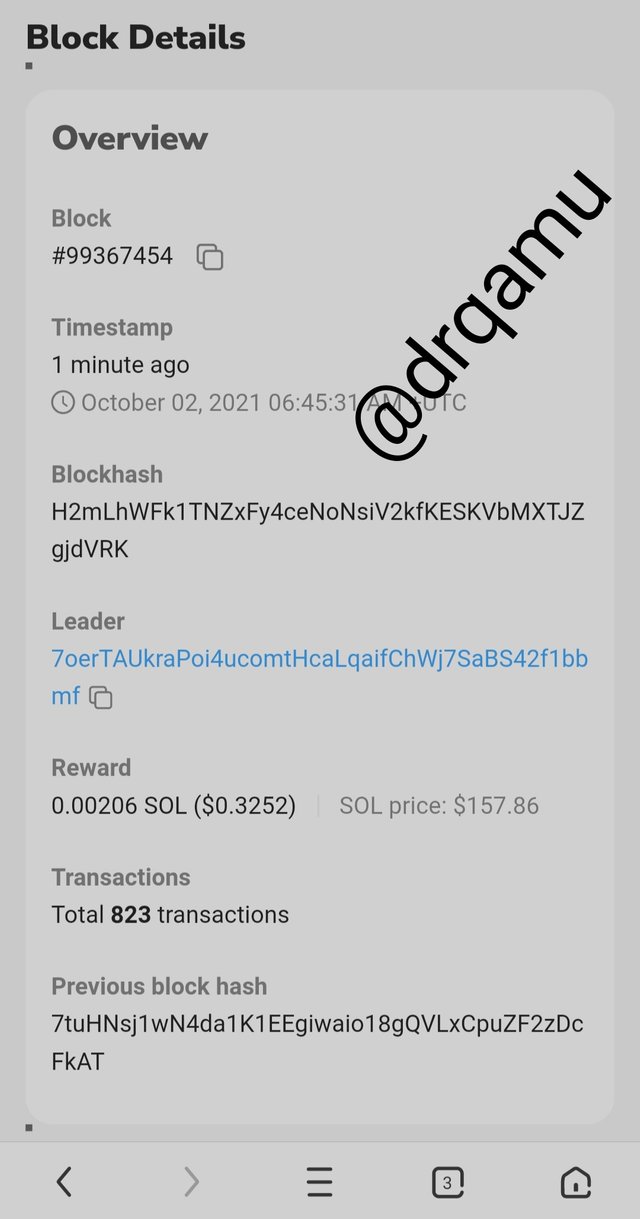
After checking transaction history, we can see that many new blocks are generated in one minute and in the block above we can see that it contains 823 transactions.
Still we are not able to make it out how many blocks are generated in 1 second. So we'll start from the Genesis block. Let's try to find out the Genesis block and then calculate the time in seconds from the Genesis block up to the current block
and also see number of blocks generated since the origin of solana.
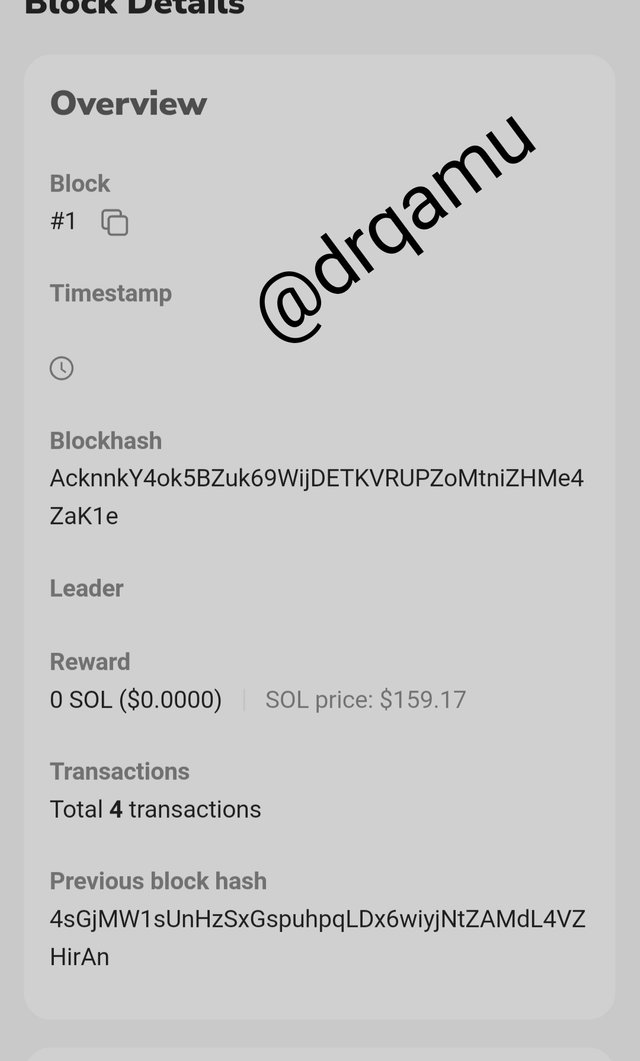
Genesis block
As timestamp is not available on the Genesis block. We can see that in genesis block, there are four transactions, we will proceed to check the time stamp on one of these transactions as shown below.
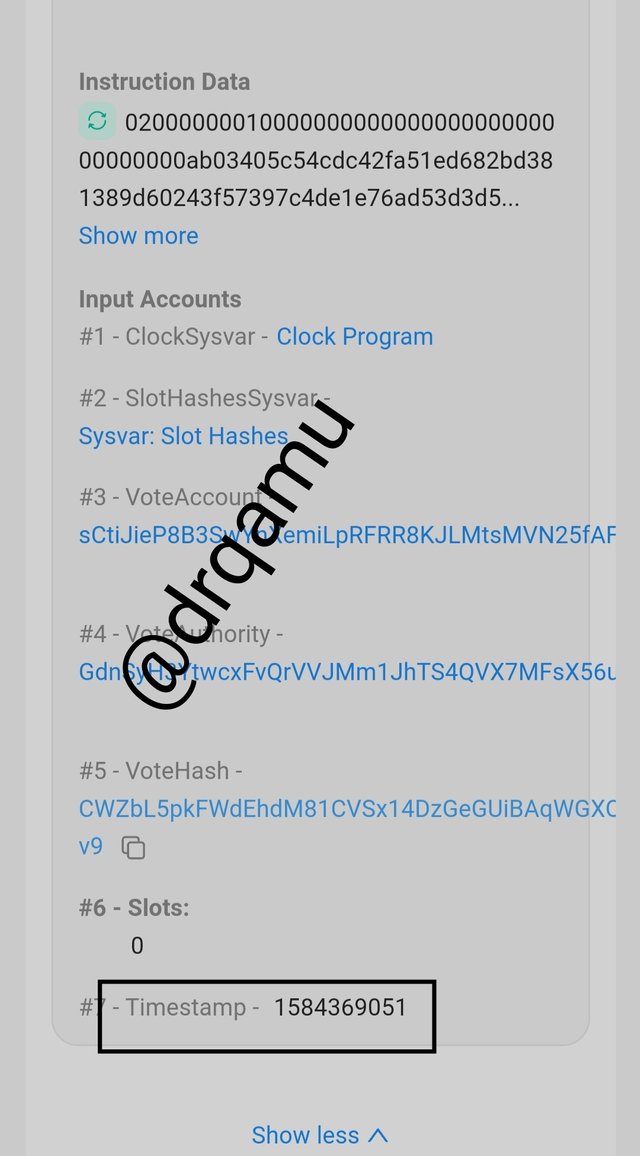
So we have data available now. We can find out block producing time.
First block date: 16/03/2021 Time: couldn't comprehend
Last Block date: 02/10/2021 Time: 06:45:21 am
So we have total 565 days
1 day has 24 hours and one hour has 3600 seconds.
So in one day we have, 24x3600 = 86400 seconds
In 565 days , we have
565 x 86400 = 48,816,000 secondsNo of blocks generated till date : 99367454
So we have 99367454 blocks generated in 48 816 000 seconds
No of blocks generated per second = 48.816 000/ 99.367454 = 0.491267493
Conclusion : Solana Network creates blocks every 0.49 seconds.
Conclusion
Solana blckchain is a decentralised, public and open source blockchain that has solved the trilemma of blockchain. Being programmable it is easy to adopt for most of the smart contracts and projects. Solana is believed to be a toigh competitor of Enterium blockchain for being superior in scalability while maintaining decentralized nature and security.
